Mobile to decide key issue on Amtrak future on gulf coast
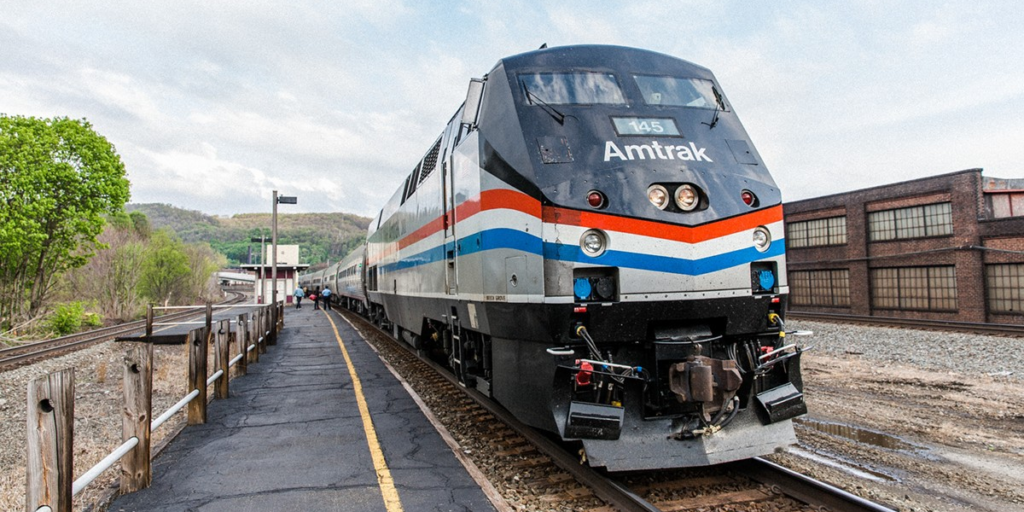
City leaders are preparing to decide a key issue in restoring passenger train service along the northern Gulf Coast, where Amtrak hasn’t operated regularly since Hurricane Katrina. Council members are scheduled to vote Tuesday on whether to commit as much as $3 million over three years to operate Amtrak trains through the city, al.com reported. Katrina badly damaged rail lines in 2005, and Amtrak hasn’t resumed regular east-west service since then. Although Mississippi and Louisiana already have dedicated money toward the project to restart trains, Alabama has been a holdup, partly because officials at Alabama’s main seaport in Mobile worry passenger trains could interfere with freight traffic. Mobile’s commitment of money to match federal funding wouldn’t be needed until 2023, the year service connecting New Orleans to Mobile could restart. The city faces a deadline of Jan. 6 for a decision, with the vote set on New Year’s Eve. “This investment is totally an offset for operational costs,” said Wiley Blankenship, chief executive of the Coastal Alabama Partnership and chairman of the 21-member Southern Rail Commission. “It’s Mobile’s decision to make.” City Council President Levon Manzie said the financial responsibility for the project remains a concern for city officials. But, he said, the “concept of a train service” connecting Mobile to New Orleans remains appealing. He also said the commitments toward operations and capital improvements made in Mississippi and Louisiana are a factor. The New Orleans-to-Mobile route would include four stops in Mississippi: Bay St. Louis, Gulfport, Biloxi and Pascagoula. “The notion that there would be coastal train service from New Orleans to coastal Mississippi and not include Mobile, I just think that it’s untenable,” Manzie said. “We need to be a part of this service.” Even with a commitment by the city, an additional $2.2 million will be needed from an Alabama-based source to finance capital improvements between the Mississippi line and Mobile. That money would be matched with Alabama’s portion of a $33 million federal grant awarded in June. Also, another $2.5 million could be required to finance the construction of a side track that would connect the main rail line to a future, $3 million train station at the city’s new downtown airport, Brookley Aeroplex. It’s unclear how those investments would be funded. Alabama Gov. Kay Ivey hasn’t expressed much interest in backing the project, which Alabama State Docks officials fear could hamper freight service to the port. Alabama remains the lone holdout on dedicating funding for the project. Mississippi has already committed $15 million, and Louisiana has promised $10 million to match federal funding. Both states are also required finance $3 million each on operations. Republished with the Permission of the Associated Press.
U.S. Treasury approves Alabama’s multiyear implementation plan for Gulf Coast recovery
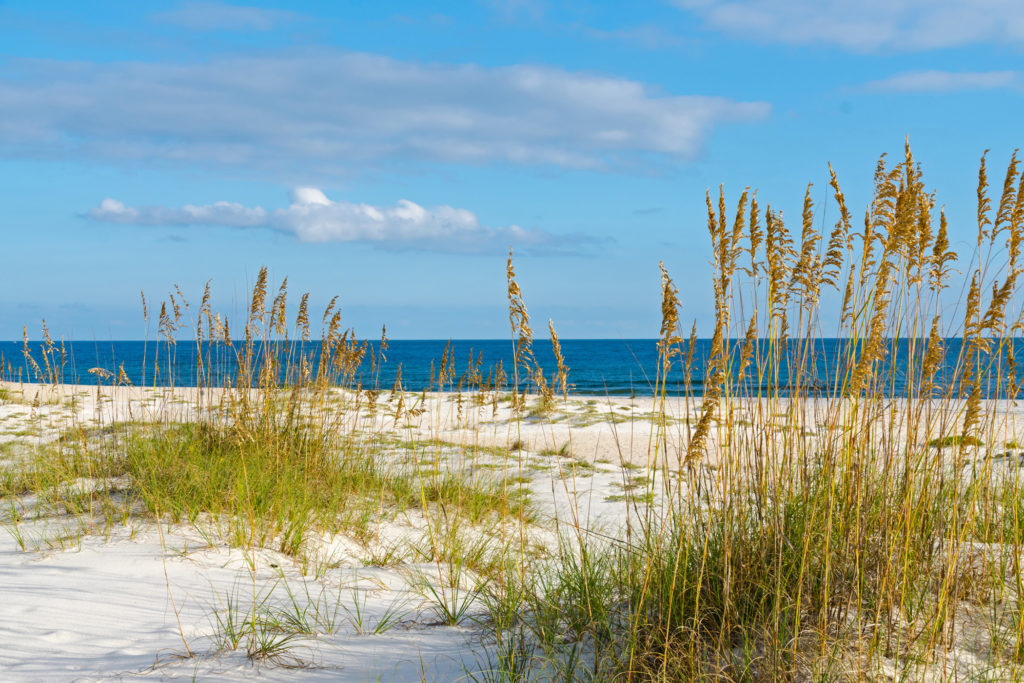
A multiyear plan developed to help restore the Gulf Coast in the wake of the 2010 Deepwater Horizon oil spill has been approved by the U.S. Department of Treasury (USDT). Developed by the Alabama Gulf Coast Recovery Council (AGCRC), the plan proposes 15 activities for Direct Component RESTORE funding for a total estimated cost of $192,416,759. Now that the plan has been approved, individual grant applications must be submitted to Treasury and awarded before project activity can begin. “This is a watershed day in the reinvestment of Alabama’s Gulf Coast communities,” said Governor Kay Ivey. “The members of the Council have worked long and hard over the past year to get us to this point; at long last, oil spill funds guaranteed to the people of Alabama through the RESTORE Act are about to be invested. I am especially grateful there has been so much public input in this process.” The projects The projects proposed in the plan are all located within Mobile and Baldwin Counties. The money for the projects comes from penalties paid by companies involved in the 2010 Deepwater Horizon oil disaster in the Gulf of Mexico through the RESTORE Act, which established a trust fund to hold much of that money aside for “programs, projects, and activities that restore and protect the environment and economy of the Gulf Coast region.” All 15 projects are in accordance with the focus areas selected by 10-member Alabama Gulf Coast Recovery Council that include infrastructure projects benefiting the economy and related planning assistance. Aloe Bay Harbour Town Phases I, II and III: The purpose of this project is to enhance economic opportunities and ensure long-term economic sustainability by creating a walkable district in and around Aloe Bay, including short-term lodging, event, and retail space. Location: Town of Dauphin Island, Mobile County, Ala. Redevelop Bayou La Batre City Docks Phases I, II and III: The purpose of the project is to redevelop the City docks to breathe life back into the space. This new vision will support many areas of the local economy and will serve as a public space and meeting place for festivals and area residents and visitors to enjoy. Location: City of Bayou La Batre, Mobile County, Ala. Water Distribution System Upgrades: The purpose of the project is to replace undersized water mains with larger lines to provide adequate water pressure and fire protection for many areas within Bayou La Batre Utilities Board service area. Location: City of Bayou La Batre, Mobile County, Ala. Northwest Satsuma Water and Sewer Project: The purpose of this project will extend water and sewer under Interstate 65 via directional boring to bring potable water, fire protection, and gravity sanitary sewer access to the households currently relying on individual wells and on-site septic tanks. This project will reduce health problems due to inadequate treatment from private wells, improve water quality, as approximately 100 on-site septic tanks will be abandoned, and will provide growth opportunities for the City of Satsuma. Residences will be connected to the infrastructure by homeowners per city ordinance. Location: City of Satsuma, Mobile County, Ala. Mount Vernon Water Treatment Plant (WTP): The purpose of this project is to upgrade the Town of Mount Vernon’s 972,000 gallons per day (GPD) Water Treatment Plant to provide more reliable service, ensuring improved environmental conditions, and allowing for future growth. Location: Town of Mount Vernon, Mobile County, Ala. Mobile County Blueway Trail Development: This water-based trail development project will increase the potential for trail business and revenue income in Mobile County, increase and enhance the public’s access to local waters, protect sensitive environments along the coast, and promote nature-based tourism. Location: Mobile County, Ala. Baldwin Beach Express I-10 to I-65 Extension: The purpose of this Activity is to 1) acquire land from willing sellers as associated with an infrastructure project in conformance with the RESTORE Act and regulations; and 2) construct the 24.5-mile Baldwin Beach Express Extension from I-10 to I-65 to complete the 51-mile Baldwin Beach Express program. Location: Baldwin County, Ala. Baldwin County ALDOT Capacity Improvements: Upgrade long under-performing state corridors in the State’s fastest growing county. Location: Baldwin County, Ala. Alabama State Port Authority Automotive Logistics/RO-RO Terminal: The purpose of this project is to allow automobile and equipment manufacturers in Alabama and other neighboring states access to a more cost-effective deep-water gateway for exporting American made products, as well as importing commodities and components that support those manufacturers. This will help the nation compete in the global economy, creating jobs and improving the regional and national economy. Location: City of Mobile, Mobile County, Ala. Gulf Coast Center for Ecotourism and Sustainability: The purpose of the infrastructure project is to house a sustainably-designed ecotourism program where visitors can learn about the ecology, biodiversity, sustainability, and resource management of the northern Gulf of Mexico to raise environmental awareness and to promote conservation and stewardship of our natural resources. Location: City of Gulf Shores, Baldwin County, Ala. Historic Africatown Welcome Center: The purpose of this project is to plan, design, and build a building to serve as a welcome center and tourist destination for the Africatown community. This activity will not only help promote economic development and tourism, but also lay the foundation for national historic preservation of the rich cultural heritage of the area. Location: City of Mobile, Mobile County, Ala. Innovating St. Louis Street: Mobile’s Technology Corridor: The project purpose includes the design and reconstruction of the road bed, adjacent, and subsurface infrastructure within the St. Louis Street right-of-way. The planning, design, and reconstruction of existing utility, streetscape, roadway, and storm drainage infrastructure along St. Louis Street would represent a significant milestone for the City of Mobile. Comprehensively, this initiative correlates with broader objectives for fostering additional business development and economic revitalization opportunities within the corridor and the surrounding area. The City’s vision, in partnership with the University of South Alabama and other stakeholders, includes the creation of a “vibrant, live, work, play and learn district” in downtown Mobile. The St. Louis Street corridor is poised to become Mobile’s Downtown Technology Corridor, which will house “Innovate Mobile,” a regional science and research park. The University of South
Jim Ziegler asks TPO to table bridge decision pending John Cooper/ALDOT answers
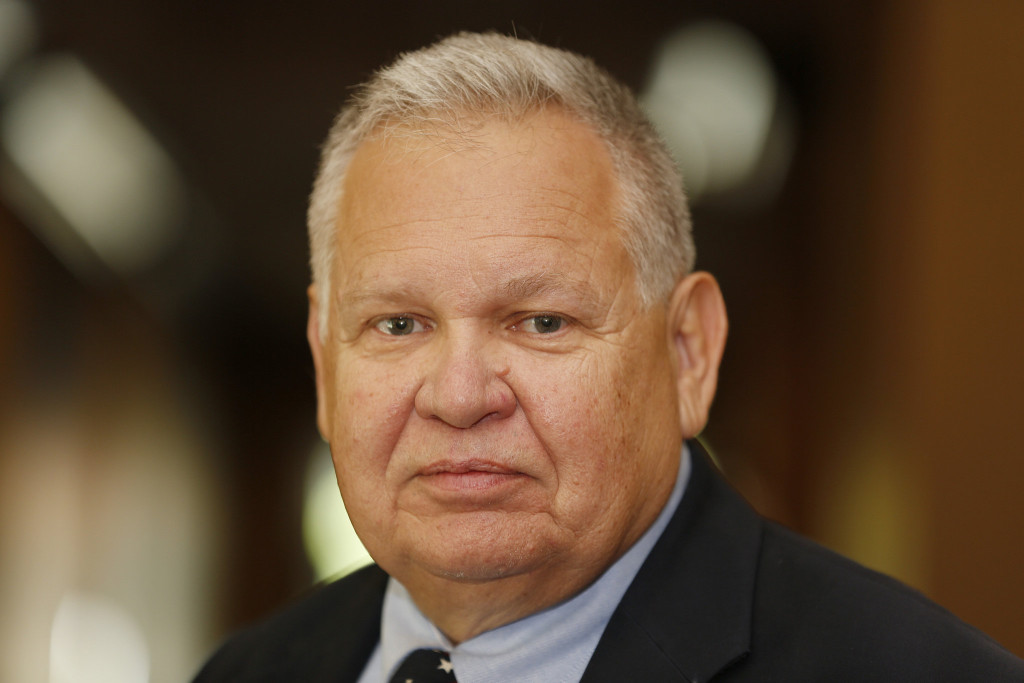
Alabama State Auditor Jim Zeigler is back at it: trying to protect taxpayers from wasteful spending. Just over two months ago, Ziegler reached out to the Alabama Department of Transportation (ALDOT) trying to find answers about a proposed bridge between Orange Beach and Gulf Shores, AL. As Alabama Today previously reported, in a letter dated April 17, sent a letter to John Cooper, Transportation Director at ALDOT and William Patty, ALDOT Chief Counsel, inquiring about the need for an $87 million state-funded bridge project in Baldwin County — which would be a second bridge to Orange Beach. Zeigler requested the following documents from the ALDOT: Copies of any and all studies that demonstrated a need for a bridge over the Intercoastal waterway Any and all documents that show a change in the need for the Intercoastal bridge since the determination in 2016 that the bridge was unnecessary Any and all analyses to support spending $30-$87 million in state funds in light of the pressing infrastructure needs throughout the state Any and all documents that resulted in the range of costs projected ($30 to $87 million) Documents that show cost overruns on current and recent ALDOT projects According to the court filing from the bridge company, they agreed to widen their bridge at no additional cost to Please provide any and all documents that address why the option of widening the original bridge is not being utilized. John Cooper and ALDOT have yet to respond to Ziegler’s request. Which is why on Tuesday, he sent a letter to the Florida/Alabama Transportation Planning Organization (TPO) making a formal request that they delay action on an agenda item, Resolution FL-AL 18-12, during a meeting they have scheduled Wednesday. This Resolution would update the 2040 Florida-Alabama Transportation long range plan to include the controversial bridge. The report notes that, in April 11, 2018 the “TPO tabled action on: Gulf Coast Intracoastal Waterway Bridge from SR 180 (Canal Road) to Foley Beach Express; Wolf Bay Bridge and Connecting Roads from SR 180 (Canal Road) to CR 20. TPO amended the LRTP to add two projects: I-10 from US 29 to the Alabama State Line; Nine Mile Road from in the Vicinity of Beulah Road to East of I-10.” The decision to table action was a direct result of local residents speaking out to express their concerns. Joe Emmerson who leads the group opposed to the “Bridge to Nowhere” and other local residents attended the meeting and expressed their concerns over both the cost and need for the bridge as well as the effects it would have on existing property owners in the area. The report for Wednesday’s cites two public hearings on the project (one being the last TPO meeting) although in sworn testimony DOT officials expressly denied any public hearings have been held and residents have expressly spoken out against the fact they have not had the opportunity to have their voices heard. The resolution in question is one concerning the controversial Gulf Coast Intracoastal Waterway Bridge from SR 180 (Canal Road) to Foley Beach Express. Read Zeigler’s letter in full below: State of Alabama June 12, 2018 Mr. Gary Kramer Ms. Tiffany Bates Florida/Alabama Transportation Planning Organization Request that you postpone any positive action on Item F.1. (1) As the State Auditor for the State of Alabama, I hereby request that you delay any positive action on the first half of Resolution FL-AL 18-12 (Item F. 1, enclosure A) on your June 13, 2018 agenda. This is the Gulf Coast Intracoastal Waterway Bridge from SR 180 (Canal Road) to Foley Beach Express. The reason is that I have formally requested from the Alabama Department of Transportation vital public documents needed to address issues about this proposed project. ALDOT has not yet provided the documents as yet. If you will postpone any positive action on F.1 (1), I will notify you as soon the needed documents are provided. I will also provide you my independent review of this project. F. 1. Consideration of Resolution FL-AL 18-12 to amend the Florida-Alabama 2040 Long Range Transportation Plan for Two projects: (1) Gulf Coast Intracoastal Waterway Bridge from SR 180 (Canal Road) to Foley Beach Express Thank you. Jim Zeigler Alabama State Auditor 600 Dexter Ave., S-101 Montgomery, AL 36130 334-242-7010 Alabama Today has reached out to Austin Mount the Executive Director of the TPO to confirm they are in receipt of the letter, to ask if it has been forwarded to members of the commission and to seek comment and will update this story upon hearing back from them. He responded back Tuesday evening that the resolution item will remain on the agenda. Below is his full response: “We are in receipt of the request however the item still sits on the agenda and will be discussed tomorrow. ALDOT is heavily in support of the bridge and the TPO board will be informed of all materials received before they make a decision to deny/approve/table the bridge matter.” *6:28 p.m. CT: this article has been updated to include a response from TPO.
Bradley Byrne: Protecting a Gulf Coast tradition

Down here on the Gulf Coast, fishing is a way of life for many people. It is a tradition that spans generations and is one way we bond with our family and friends. In fact, some of my fondest memories happened while casting a reel. I remember my father showing me how to bait a hook and teaching me about the patience of waiting for a bite. I enjoy carrying on that tradition with my kids. Just in time to celebrate National Fishing and Boating Week, Alabama’s 2018 Red Snapper season officially opened on June 1st. The Red Snapper season is a real boon for our coastal communities, and the impact is felt all throughout Southwest Alabama. The economic impact flows to everything from gas stations to restaurants to hotels. Unfortunately, in seasons past, Alabama has felt the full force of Washington when it comes to regulating our recreational fishing. These regulations are based on junk science, yet have a huge impact on when we can and cannot fish. Anyone who has been fishing in the Gulf over the last few years knows there are more than enough Red Snapper in our waters, and Washington’s methods of stock assessments are sorely out of touch with what is happening. When it comes down to it, no one understands the needs of our fisheries better than those who cast a reel along the Gulf Coast. The federal bureaucrats in Washington have no business controlling our fisheries when those of us on the coast know what is best for our fishermen. That’s why, earlier this year, I wrote to the National Marine Fisheries Service to advocate for Alabama’s application for an Exempted Fishing Permit (EFP), which would allow the state to set our own season for the next two years. I was pleased when this EFP was granted by the Department of Commerce on April 20, 2018, securing Alabama’s 47-day Snapper season for the 2018 and 2019 seasons. Specifically, the 2018 Red Snapper season in Alabama will run from June 1 through September 3, with Fridays, Saturdays, and Sundays open to fishing. The entire week of the Fourth of July (June 30 through July 8) will also be open for Red Snapper fishing. You see, this is how government should work: take power from Washington and return it to the people who best understand the issue. I am proud to have helped secure a lengthy Snapper season, which means our fishermen will have adequate time to enjoy a Gulf Coast tradition while our coastal communities will benefit from increased revenue. It is truly a win-win situation for coastal Alabama. Of course, there were many people who had a hand in securing an adequate season for our fishermen. I thank Senator Richard Shelby for his support and his work to secure the language for the EFP in last year’s appropriations bill. I also appreciate the Gulf Council for their support of the exempted fishing permit pilot program and Alabama Department of Conservation and Natural Resources Commissioner Chris Blankenship and our other Gulf Coast colleagues for working together to support our fishermen. Ultimately, it was a total team effort to make this 47-day Snapper season a reality. This is a real victory for all our recreational fishermen as well as our coastal region. As I have always said, this issue is about so much for than just our fishermen; the Red Snapper season impacts our entire costal community, and I look forward to a safe and fun season. • • • Bradley Byrne is a member of U.S. Congress representing Alabama’s 1st Congressional District.
Gulf Shores to provide $1 million grant for local zoo

The long awaited relocation of the Alabama Gulf Coast Zoo is one step closer to becoming a reality thanks to a $1 million grant from the Gulf Shores City Council. Gulf Shores City Councilman and chairman of the zoo foundation board, Steve Jones, said the board has been exploring relocating the zoo for years, the $1 million grant will be used to secure financing for a 25-acre site just North of the Intercostal Waterway in Gulf Shores. “We’re excited because as difficult as it’s been, we’re finally going to realize this mission and this dream of actually getting this project started and finished once and for all,” Jones told Lagniappe. “Call it a two-year process but now we’re down to the final 30 days, hopefully getting fully funded and beginning the project and get the project built from start to finish and open it in less than two years.” The rest of the financing is being made possible by a $26.3 million bond issue. These funds will be used for a refinance on the existing zoo debt, construct the new zoo facility, and buy 71-acres of land next to the new zoo site. “The bonds are actually going to be sold on the open market,” said Jones. “They have a lot of stipulations, regulations and hoops for us to jump through with regard to what they expect us to do and it’s pretty onerous. There is a private investment company that finds projects like this and decides they are worth investing in. One investment group is purchasing this entire package. All of the revenues that the new project is going to generate are all pledged to the repayment of these bonds.” Gulf Shores is quickly becoming one of the most economically charged cities in the state. According to AL.com, 25.8 million people visited the gulf coast and spent $13.3 billion last year. The new zoo location will be a great addition to the already growing gulf coast attractions. The $1 million grant will be presented to the zoo from Gulf Shores when construction is complete in 2020.
Bradley Byrne, Gulf colleagues ask Trump Administration for longer red snapper season
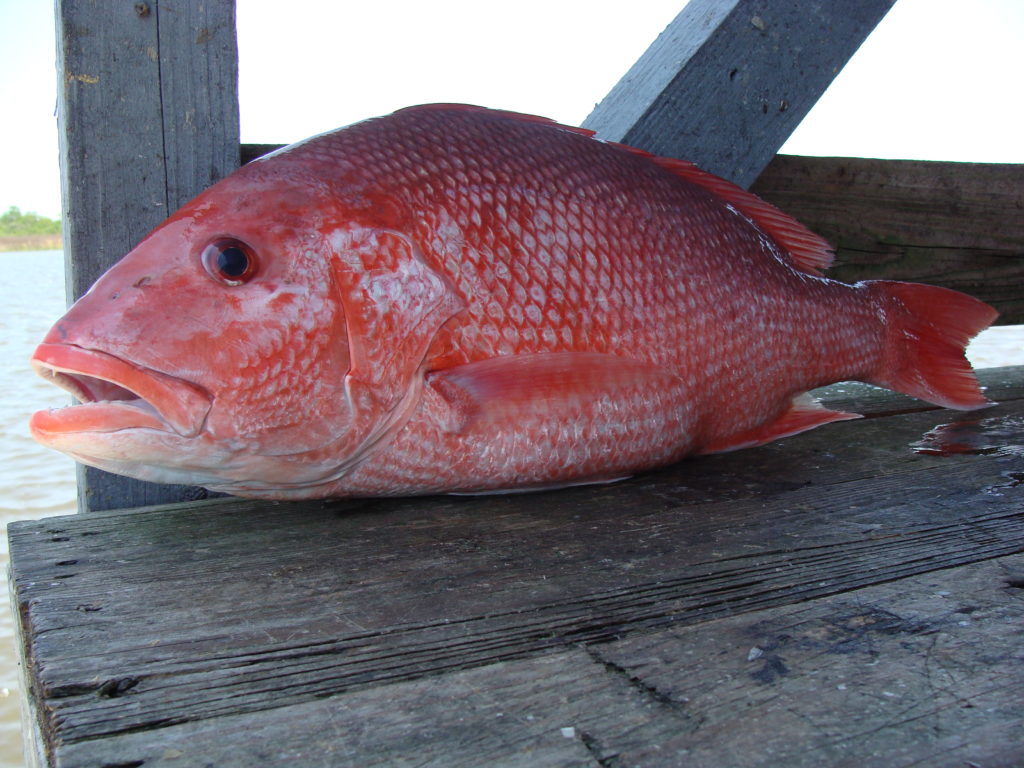
Members of the U.S. House of Representatives aren’t giving up on their fight to extend the number of days for the 2017 red snapper season in federal waters. On Monday, Alabama 1st District U.S. Rep. Bradley Byrne, along with four other Members of Congress representing districts on the Gulf Coast, sent a letter to Secretary of Commerce Wilbur Ross urging him to extend the number of days. Currently, the season is scheduled to run from June 1-3, making it the shortest red snapper season ever in the Gulf of Mexico. “A three day red snapper season is simply not acceptable, especially given how many red snapper there are in the Gulf right now. Anyone who knows anything about Gulf Coast fisheries would agree that the red snapper fishery is incredibly healthy,” Byrne said of his request. “By bringing other Gulf Coast Congressmen together, I am hopeful we can get the Trump Administrative and Secretary Ross to provide some relief for our recreational fishermen ahead of the 2017 federal season.” In asking for a longer season, the Gulf Coast congressmen — Louisiana-Republican Garrett Graves, Texas-Republicans Randy Weber and John Carter, and Mississippi-Republican Steven Palazzo — pointed to the inaccurate data the National Marine Fisheries Service used to set the 2017 data. “Our recreational fishermen are being penalized by NOAA for a statistical anomaly,” the letter stated. “Currently, NOAA’s data says that recreational fishermen exceeded last year’s quota by 129,906 pounds. However, 129,000 pounds represents less than .02 percent of the recreational quota.” Read the full text of the letter below: Dear Secretary Ross, We write today to express our disappointment in the recent announcement from the National Marine Fisheries Service (NMFS) of a three day recreational Red Snapper season. It is unacceptable. We ask that you reevaluate this decision and extend the number of days for the 2017 season. On March 21st, we wrote to you about the importance of access to adequate fishing resources in the Gulf of Mexico, and namely Red Snapper. You responded that the Red Snapper fishery is a high priority for you and your department, and therefore it is time for more than three days. Our recreational fishermen are being penalized by NOAA for a statistical anomaly. Currently, NOAA’s data says that recreational fishermen exceeded last year’s quota by 129,906 pounds. However, 129,000 pounds represents less than .02 percent of the recreational quota. This decision has no bearing on the health of the stock, and there is no chance NOAA is representing the number with any degree of accuracy. At the state level, we continue to see report numbers that do not match NMFS’s data, caused by the lack of real-time information. For example, in Alabama, preliminary estimates for 2016 show a total of approximately 821,000 pounds counted by Alabama’s Snapper Check Program. NOAA’s estimates for the same time show approximately 2 million pounds accounted for. Mississippi’s data shows the opposite problem. According to data from Mississippi’s Tails n’ Scales Program, almost 40,000 pounds were accounted for, yet NOAA’s data claims there were zero pounds taken. It is time for recreational anglers to stop being penalized for NOAA’s bad science and lack of coordination. In short, there is serious doubt that federal data is accurately reflecting the number of Red Snapper in the Gulf. For that reason, we feel revaluating your agency’s decision for the 2017 season is warranted, and we urge you to continue working with us to develop a long-term solution to address these issues impacting our recreational fishermen and coastal communities. Thank you for your attention to this matter. We look forward to hearing from you.
Lawyers, company agree on documents in ongoing Gulf oil leak
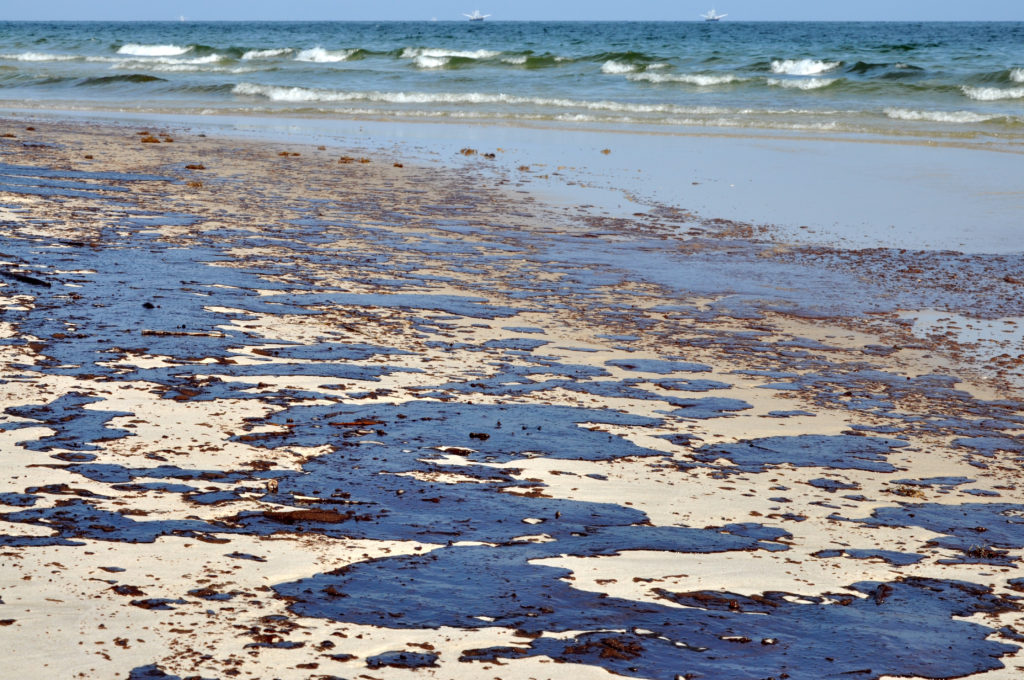
Environmental attorneys and a New Orleans energy company agreed Thursday to work out differences over the confidentiality of documents related to an ongoing Gulf of Mexico oil leak from an offshore site damaged by Hurricane Ivan in 2004. Environmental groups including Waterkeeper Alliance, Apalachicola Riverkeeper and the Louisiana Environmental Action Network agreed in federal court with Taylor Energy to negotiate supplemental language for a 2015 settlement agreement over how and when to release information on Taylor’s response to the leak. At issue are volumes of documents that Taylor Energy says include confidential information about oil spill containment technology developed for the company. A 2015 Associated Press investigation revealed evidence that the leak was worse than the company or the federal government had earlier reported. Government experts believe oil is still leaking at the site where waves whipped up by Hurricane Ivan in 2004 triggered an underwater mudslide, toppling a Taylor Energy-owned platform and burying a cluster of its oil wells under mounds of sediment. Last year, regulators estimated the leak could last a century or more if left unchecked. Taylor Energy has said nothing can be done to completely eliminate persistent slicks from the site. The company has said the sheens sometimes seen off Louisiana’s coast are coming from residual oil oozing from sediment on the seafloor. Republished with permission of the Associated Press.
Bradley Byrne: Standing up for the Gulf Coast

I am so proud to live on the Gulf Coast. From our delicious food to the abundant natural resources, our part of the country is unlike any other. My family has called this area home since the 1780s. My family has always enjoyed fishing, swimming, boating, and just spending time on the Gulf. It has become a way of life for my family, just like it has for so many others. For some people, the Gulf also provides for economic well-being, whether through the commercial seafood industry or our booming tourism industry. This is why I am always on the lookout for policies or proposals that might make life harder for families living and working on or near the Gulf. Our area faces unique challenges, and I wanted to share two specific areas where I am looking out for the Gulf Coast. First, President Barack Obama proposed in his annual budget to take offshore energy revenue away from the Gulf states and instead spend it all around the country to advance his radical climate agenda. The President’s proposal would take money from the Gulf of Mexico Energy Security Act (GOMESA) of 2006. GOMESA is the federal legislation that creates a revenue-sharing agreement for offshore energy revenue between Alabama, Texas, Louisiana, and Mississippi. Under GOMESA, each state receives 37.5 percent of federal oil revenue from drilling of their coasts. This money is critical to our coastal counties because it is used for important purposes like coastal restoration and hurricane preparedness. I have even suggested using a portion of Alabama’s GOMESA money to help fund the I-10 bridge project, given that I-10 serves as a hurricane evacuation route. GOMESA was structured to benefit Gulf states because we are the ones who provide a significant share of the infrastructure and workforce for the industry. Gulf states also have inherent environmental and economic risks posed by offshore energy production. The president’s proposal simply defies logic and is a slap in the face to all of us on the Gulf. So, I offered an amendment to the annual Department of Interior funding bill that would block any efforts to transfer GOMESA money away from the Gulf states. I’m pleased to report my amendment was adopted and included in the final bill. Secondly, I also stood up against President Obama’s efforts to implement a “National Ocean Policy.” Created through an executive order, the “National Ocean Policy” requires various bureaucracies to work together to “zone the ocean,” which would significantly affect the ways we utilize our ocean resources. The “policy” would restrict ocean activities while also redirecting money away from Congressionally directed priorities. Numerous and varied industries will suffer as a result of this ill-conceived policy, including but not limited to agriculture, energy, fisheries, mining, and marine retail enterprises. Those who are affected most by the policy don’t have a say or any representation in the rule-making process — there is no current system of oversight in place for the regional planning agencies created as an arm of the National Ocean Council. So, again I went to bat for the Gulf Coast and offered an amendment to block any funds from being spent on the “National Ocean Policy.” My amendment passed by a vote of 237 to 189. These are just two examples of my efforts to stand up for the Gulf Coast. I will continue to do everything I can to protect our coastal communities and make life easier for families all around the Gulf Coast. • • • Bradley Byrne is a member of U.S. Congress representing Alabama’s 1st Congressional District.
Bradley Bryne blocks Obama from using offshore drilling revenue to implement climate program

The U.S. House of Representatives on Tuesday adopted an amendment to block the Obama administration’s proposal to transfer money away from Alabama and other Gulf states to help fund the president’s “Coastal Climate Resilience” program that would help communities “prepare for and adapt to climate change.” The amendment, introduced by Alabama 1st District U.S. Rep. Bradley Bryne, prohibits any efforts to redirect funds allocated under the Gulf of Mexico Security Act (GOMESA) of 2006. GOMESA allows four Gulf states — Alabama, Louisiana, Mississippi and Texas — to receive 37.5 percent of federal oil revenue from drilling off their coasts, capped at $500 million a year, beginning in 2017. In February, President Barack Obama proposed transferring GOMESA money away from the Gulf States to pay for the Coastal Climate Resilience program by redirecting the funds toward climate projects, including $400 million to help Native American tribes in Alaska deal with climate change. Calling the GOMESA payments “unnecessary and costly” the Obama administration has complained they go to only a “handful of States under current law.” Meanwhile, GOMESA states argue they have long received a lower percentage of revenue than interior states for federal drilling within their borders, explaining the money will help offset damage to the environment and infrastructure caused by oil drilling. Prior to the amendment’s passage, Byrne spoke on the House floor in support of it. “These Gulf States not only provide a significant share of the infrastructure and workforce for the industry in the Gulf, but they also have inherent environmental and economic risks,” said Byrne. “Unfortunately, in his budget proposal this year, President Obama recommended that the money be taken away from the Gulf States and instead be spread around the country to implement his radical climate agenda.” Byrne continued, “Not only does this proposal directly contradict the current federal statute, it vastly undermines the purpose of the law — to keep revenues from these lease sales in the states that supply the workforce and have the inherent risk of a potential environmental disaster.” The amendment passed by unanimous voice vote. Watch Byrne’s floor speech on the amendment below:
$21 million approved for Alabama Gulf conservation projects

Alabama Gov. Robert Bentley says the National Fish and Wildlife Foundation has approved of spending more than $21 million on projects to restore areas of Alabama’s Gulf Coast. Bentley said in a statement Tuesday that the money will be used to launch five projects focused on natural resources that were affected by the 2010 Deepwater Horizon explosion and oil spill. Officials say the projects include fisheries and ecosystem monitoring, a project to bolster the state’s artificial reef program and strategic land acquisition. Bentley says the Alabama Department of Natural Resources, the department of conservation and federal agencies developed the five programs. Officials say more than $356 million from the Gulf Fund will be used to fund conservation projects in Alabama over a five-year period. Republished with permission of The Associated Press.
Alabama business roundup: Headlines from across the state

Here’s a roundup of some of the weekend’s top business headlines from across the state: Alabama Newscenter: Business Facilities: Alabama ranks high for auto manufacturing, workforce development Alabama got high marks for “Automotive Manufacturing Strength” and AIDT, Alabama’s workforce development agency, ranked high among “Workforce Training Leaders” in Business Facilities magazine’s annual rankings report, released last week. Record output at Alabama’s three auto assembly plants underlined the state’s No. 2 ranking in the magazine’s “Auto Manufacturing Strength” category. Alabama and Tennessee swapped positions in the rankings from the previous year. “Alabama, this year’s No. 2, is throwing down a marker for a heavyweight rematch: the Crimson Tide rolled out nearly a million vehicles in 2014 for Mercedes, Honda and Hyundai, with Mercedes expanding at Tuscaloosa to introduce a new model,” Business Facilities noted in its ranking report. Alabama’s “world-class on-site training for advanced manufacturing,” is cited for a No. 2 ranking among “Workforce Training Leaders.” AIDT, which has trained 600,000 Alabamians since its founding in 1971, is a division of the Alabama Department of Commerce. “We’re proud of the efforts that these rankings represent,” Commerce Secretary Greg Canfield said. “But there is still much work to be done. With a new workforce incentive structure and a streamlining of resources, we’re poised for even greater things in Alabama.” Under Governor Robert Bentley’s leadership, Commerce is expanding its responsibilities in workforce development with key programs being consolidated within the department. AIDT remains the centerpiece of Alabama’s workforce development efforts. “It’s always nice when rankings come out and people outside of the state recognize the job you’re doing as an organization,” said Deputy Commerce Secretary for Workforce Development and AIDT Director Ed Castile said. “But it really says more about the people of Alabama who go through training and get those advanced skill jobs and make the products that people want. They truly are the best assets we have.” Alabama also ranked No. 6 among the states in the “Education: Tech Skill Leaders” category and No. 9 for “Lowest Industrial Electricity Rates.” Business Facilities has been ranking states annually for 11 years. Alabama Newscenter: Alabama shucks! Oyster means world for Gulf Coast farmers Alabama’s oyster reefs have historically harvested an average of one million pounds of oysters per year and have made it one of the top oyster producing states in the nation for more than a century. But changes to water temperature, environmental impacts, parasites and other issues have made the reefs unpredictable and, at times, unproductive. Oyster farming – with the help of the Auburn University Shellfish Laboratory – has emerged as a more controlled way of continuing Alabama’s oyster producing traditions. This video story put together by Joe York for the Southern Foodways Alliance based at the University of Mississippi’s Center for the Study of Southern Culture talks about how oysters have a strong future through farming in the state. “In 2009, not a single oyster farm operated on the Alabama coast. By 2015, there were eight oyster farming companies, all determined to prove that the world’s best oysters come from this Southern state. Lane Zirlott, of Murder Point Oyster Company, calls it an oyster revolution – one that focuses on presentation as much as taste, and enables hard-working families to make a consistent living on the Alabama waters,” York wrote in the introduction to the video. Officials want to see farming grow alongside increases in reef harvesting to boost oyster production in Alabama to new heights. Birmingham Business Journal: Blue Bell resumes ice cream production at Sylacauga plant Blue Bell Creameries on Wednesday confirmed that production has officially resumed at its Sylacauga facility as the company looks to move forward following a listeria scare that halted work across its footprint. The ice cream products are currently being added to the company’s inventory, but no date has been given as to when products will return to store shelves, according to a report from Fox 6. The company began trial runs at its Sylacauga plant in July, and over the last month, have continued until production was ready to return to a normal pace. A spokesman for the Alabama Department of Public Health, which has partnered with the company through the process, said Blue Bell has run tests at the Sylacauga plant and are free to produce and sell ice cream products. Blue Bell in April recalled all of its products after at least 10 people were diagnosed with listeria. Three of those infected died, according to the Centers for Disease Control and Prevention. The company closed its four locations in Alabama, Oklahoma and Texas for cleaning, in addition to saying the Blue Bell staff at all facilities would undergo training to emphasize aggressive cleaning methods. Blue Bell in May laid off more than a third of its workforce following the closing of the plants and furloughed an additional 1,400 workers. Birmingham Business Journal: Alabama among worst states for student loan debt A new report claims more than 11 percent of all student debt is currently in default – and Alabama is faring much worse than other states. That’s according to a new report by WalletHub, which ranked Alabama 44th overall on the list of the best states for student loan debt. The study took several factors into account, including average debt, student loan debt as a percentage of income, unemployment rate and percentage of student loans in default. The state scored the worst in unemployment for adults aged 25-34, coming in at 50th. Alabama ranked 44th for the percent of student loans in default and 39th for average student debt. WalletHub’s report said the best states were Utah (No. 1), Wyoming (No. 2) and North Dakota (No. 3). Yellowhammer News: High-tech European space company to launch manufacturing operation in Alabama Switzerland-based RUAG announced Friday that it will launch an Alabama manufacturing operation after forming a strategic partnership with United Launch Alliance, which produces rockets at a factory in Decatur. RUAG, one of Europe’s leading suppliers of products for the space industry, said the new Alabama
Judge says BP spill damage payouts to local entities to start soon
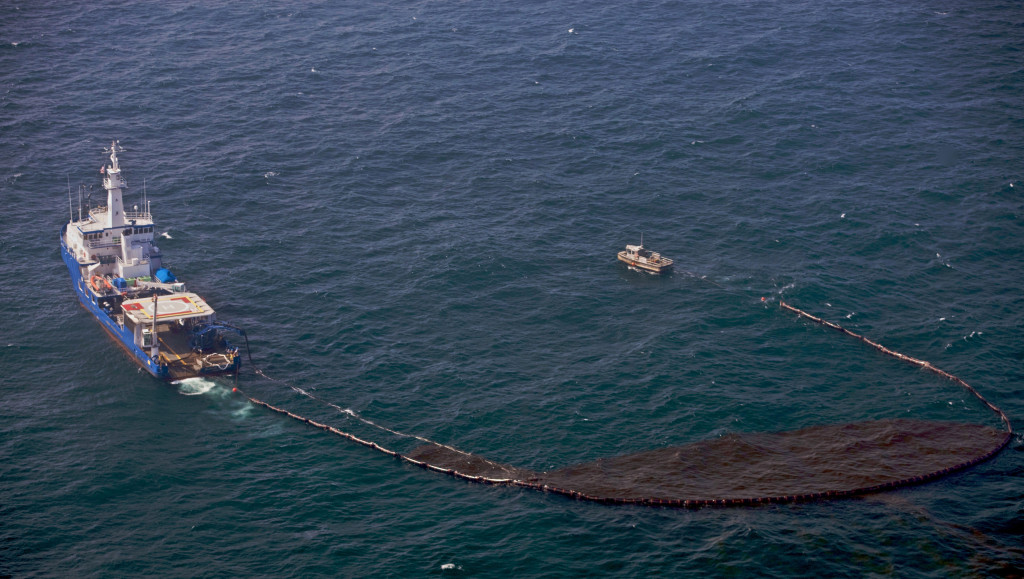
A federal judge says BP will begin paying up to $1 billion in settlements to compensate local governments across the Gulf Coast for lost tax revenue and other economic damages they blame on the company’s 2010 oil spill. An order issued Monday by U.S. District Judge Carl Barbier said all of the payments to local governments must be made within 30 days. BP’s Macondo well blew out on April 20, 2010, leading to deadly explosions aboard the Deepwater Horizon drilling rig and the nation’s largest offshore oil spill. The federal government used a team of scientists to calculate that about 172 million gallons spilled into the Gulf. BP put the number much lower, closer to 100 million gallons. July 15 was the deadline for about 500 local governments in five states to decide whether to accept BP’s settlement offers as part of a broader $18.7 billion agreement with the five Gulf states and the federal government over damage from the spill. Barbier’s order says BP says most local government entities have accepted the settlement. A handful of local governments have not accepted to settle and are continuing to fight for more money. Among those not taking the settlement are Plaquemines Parish in Louisiana and Orange Beach in Alabama. Both locations were heavily oiled by the spill. Plaquemines, for instance, says that the compensation offered for heavy oiling of its marshland isn’t sufficient. The parish says that about 10,000 acres of parish land was heavily oiled and that in all about 40,000 acres of coastal area was damaged by the spill. Government entities are expected to receive varying amounts in compensation according to how much damage they suffered. Jefferson Parish is expected to receive about $53 million for damage it suffered, the highest expected payout so far. Coastal areas in the parish, in particular Barataria Bay, sustained a lot of damage. Republished with permission of The Associated Press.


